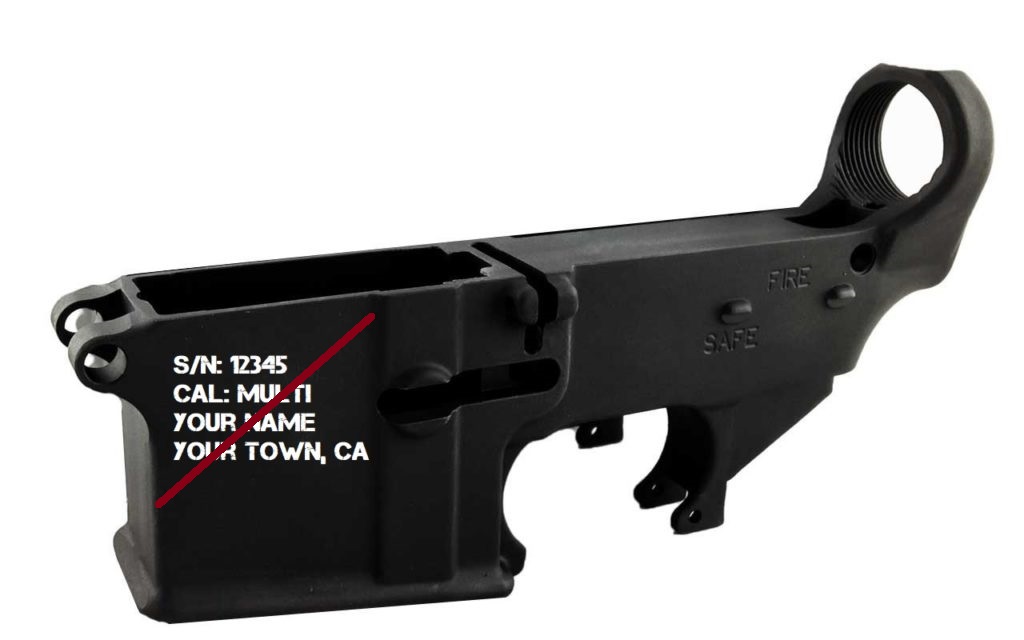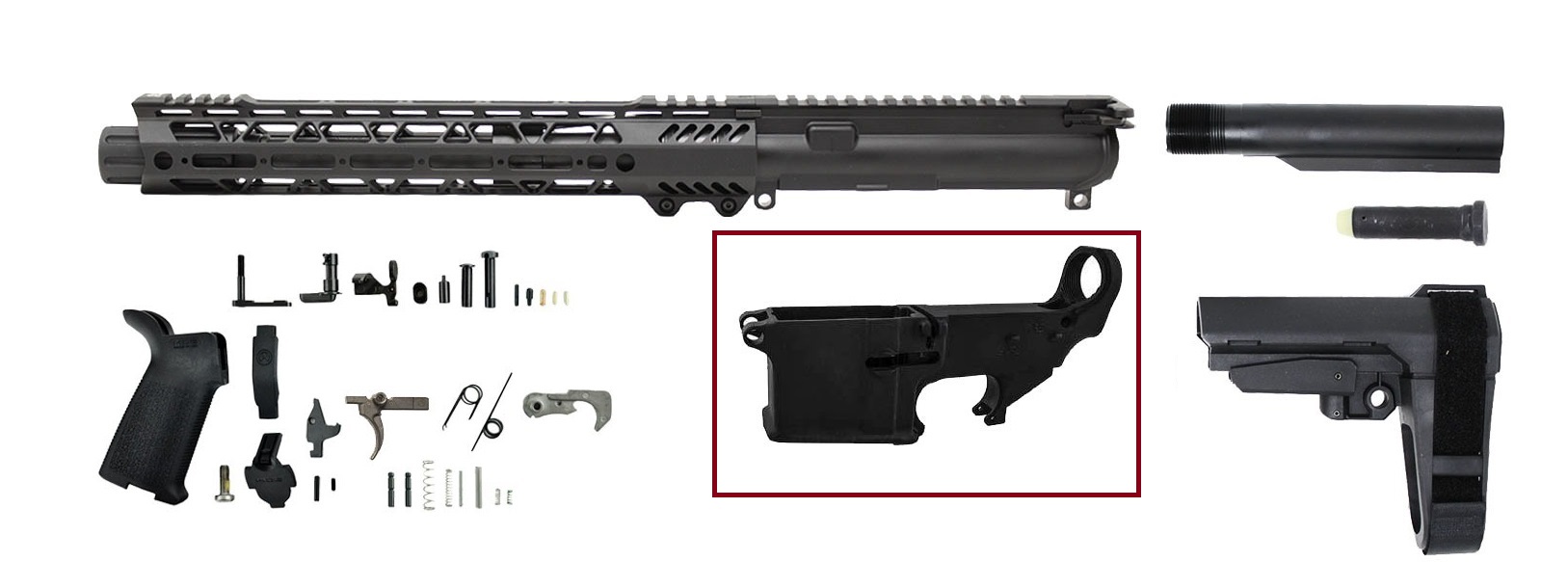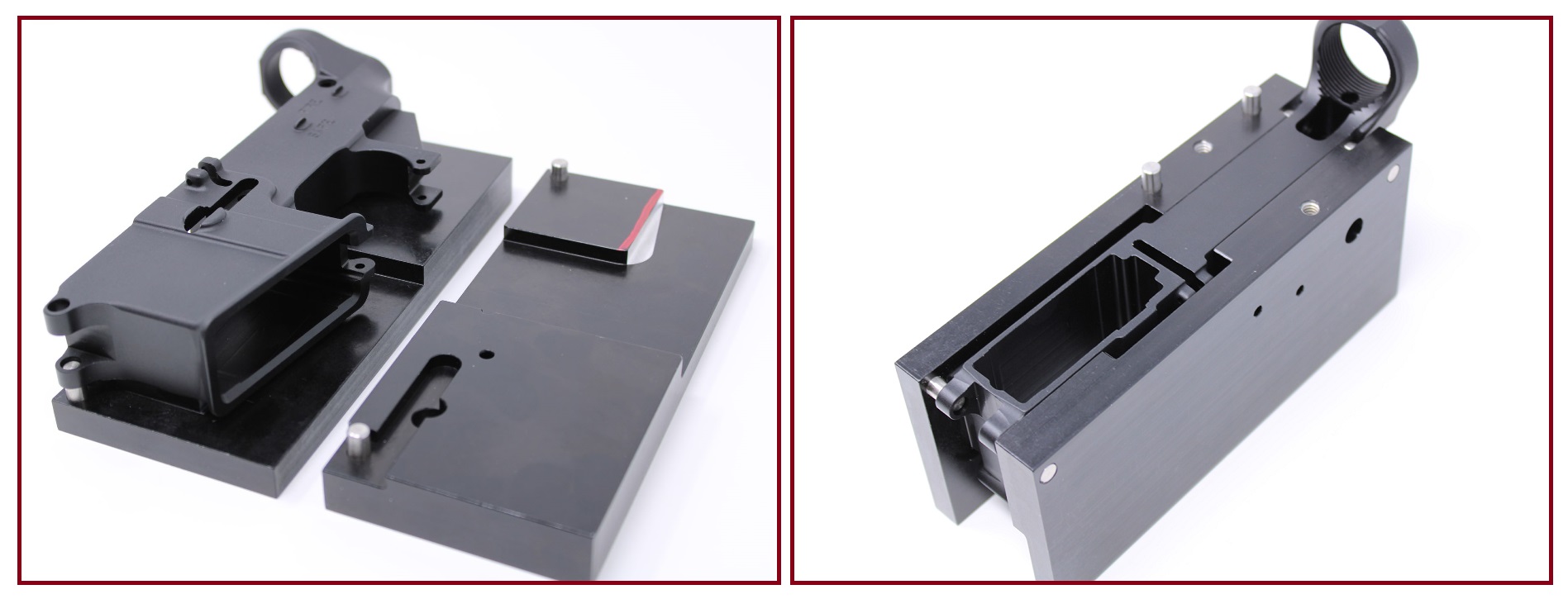Benefits of Building with 80% Lowers
Posted by Gun Builders Depot on Aug 6th 2020
By now you know what an 80% lower is, and you have a general idea of how to build an AR-15. But when it comes to getting your hands on the firearm itself -- in this case, the stripped lower receiver -- why bother? What are the benefits of using an 80% lower for your AR build compared to buying a branded lower from an FFL or dealer?
No FFL or Paperwork Required

In addition to paying all those extra costs just to get your hands on your new rifle or handgun, you also need to deal with the ATF's paperwork and transfering your weapon through a Federal Firearms Licensee, or FFL. Whether your new gun was bought online and shipped to an FFL, or bought directly through a dealer, each transaction requires that you fill out Form 4473, the ATF's "Firearms Transaction Record." This paperwork requires, yet again, more fees to be paid.
You have to foot the bill for the processing of the paperwork, and you need to pay for the background check. FFLs and dealers set the prices on these two added costs, which can go as high as $50 per transaction, sometimes more. But when you buy an 80% lower, it ships directly to you. You don't need to have your lower shipped to an FFL, you don't have to fill out a Form 4473, and you don't need to pay for processing any special paperwork or a background check.
Your New Gun Isn't "Registered"
Federal law currently prohibits the government from creating a gun registry of any kind. That doesn't stop the government from maintaining records of both you and your firearm, though. Some states, like California, keep what amounts to a firearm registry on the books, tracking both the make, model, and serial number of your firearms, and all your personal information. The federal government gets away with it unofficially, too. The ATF requires that all licensed gun dealers and FFLs keep physical records of every Form 4473 you and all their other customers have completed. Dealers need to keep these records on file for a minimum of twenty years.
If any government or law enforcement agency wants to, they can simply access those records and use that information to confiscate your firearms or pursue your Second Amendment rights. These records have already been used in states with Red Flag laws. 80% lower receivers aren't ever tracked by any government agency. They can't track these types of lowers and receivers because they're not engraved with any identifying markings or serial numbers. That means no government agency can keep tabs on your firearms with any unofficial gun registry, affording you the protection of privacy the way the law intended.
No Serialization Required

Since these types of lowers aren't firearms, they don't receive any type of unique serial number of identifying marking before sale. When purchased and shipped, aren't marked or engraved, either. And, under federal, you don't need to serialize a firearm you made for personal use. Some states require serialization and have certain restrictions in place on 80% lowers, which we cover here.
No Dealer Mark-Up
AR-15 parts are produced by just a few major manufacturers. Yet when stripped lower receivers are made, they're considered firearms. Any manufacturer producing firearms has to maintain an FFL and the added costs of doing business as a licensed dealer. The various brands that stamp their roll marks on those receivers before selling them also have to make their share of profit. All this amounts to mark-ups and extra costs, usually passed onto you, the customer. But 80% lowers are different. They're sold directly by the maker and, because they aren't considered firearms, they don't cost as much to produce. Those cost savings are thus passed onto you. That's why the typical forged 80% lower only costs $50 to $70, while most forged stripped lower receivers cost $70 to $150 or more.
Subsequent Builds Cost Less

It is true that fabricating an 80% lower is going to cost extra when compared to buying a stripped lower. You need to also purchase a jig, which allows you to cut and drill the receiver to make it functional. But once you own a jig, you can complete multiple lowers without spending extra cash. Each time you want to complete another AR build, you just buy another 80% unit and fabricate it with the tools and bits you now own. Each time you buy a gun (and in this case, each time you buy a finished lower) you need to pay all those taxes and fees, and it adds up. Instead of throwing all that money to the government each time, you can invest it just once and have the capability of making your own firearm at home. Besides, you'll probably want more than one AR.
Fabricating a Lower isn't Difficult

You don't need to own special tools or complex machinery to fabricate an 80% lower into a functional receiver. It only requires an 80% jig, which includes the bits you need, and a drill press or mill. No experience is required, and each jig includes step-by-step instructions that describe where and how to cut and drill your lower. Total machining time requires around 1 hour for new builders, though experienced builders using a mill can complete a lower in around 15 minutes.
Here's how to complete an 80% lower.
DISCLAIMER: If you are new to the world of DIY gun building, you likely have a lot of questions and rightfully so. It’s an area that has a lot of questions that, without the correct answers, could have some serious implications. At GunBuilders.com, we are by no means providing this content on our website to serve as legal advice or legal counsel. We encourage each and every builder to perform their own research around their respective State laws as well as educating themselves on the Federal laws. When performing your own research, please be sure that you are getting your information from a reliable source.

